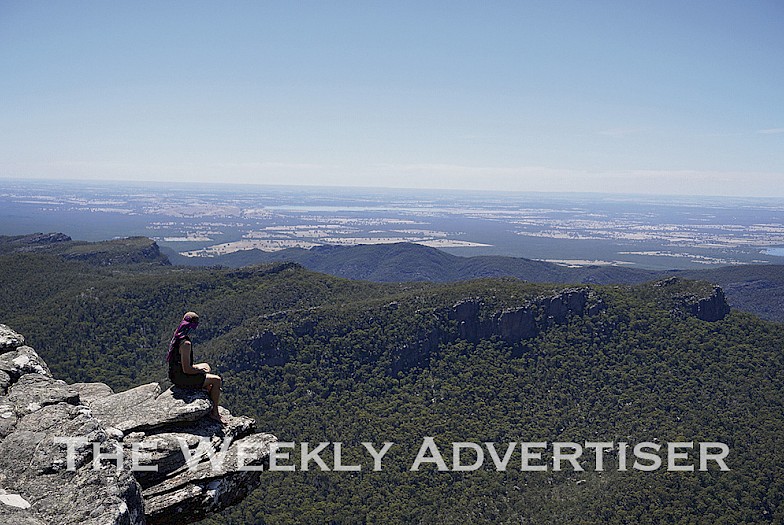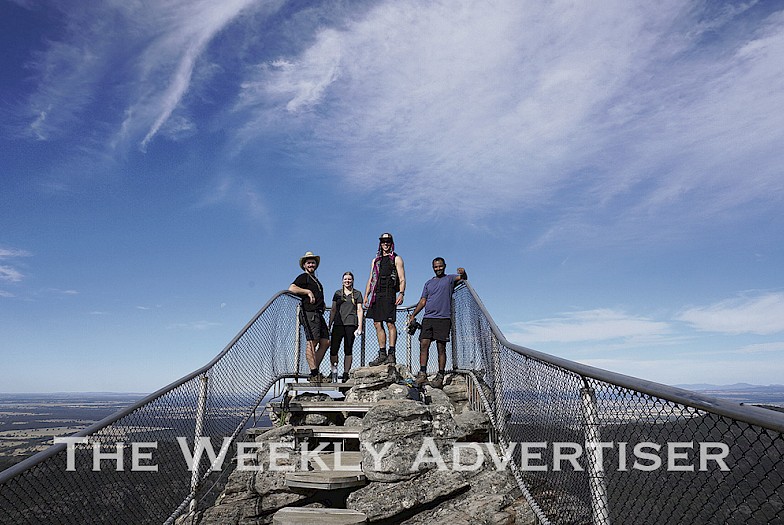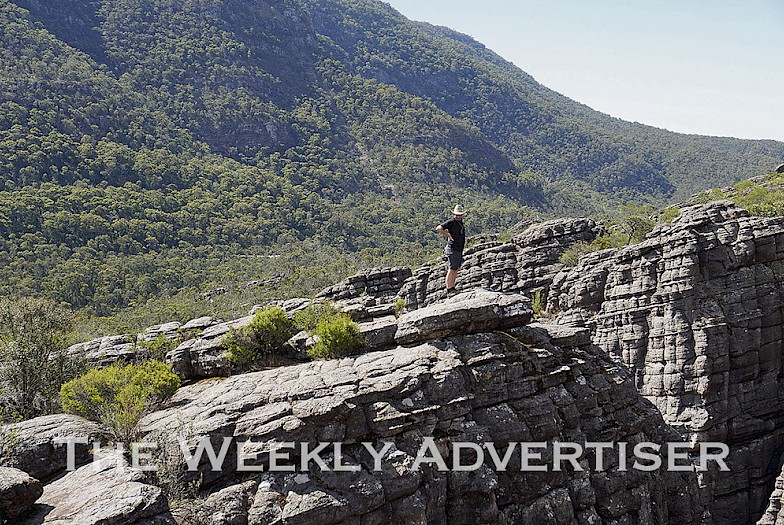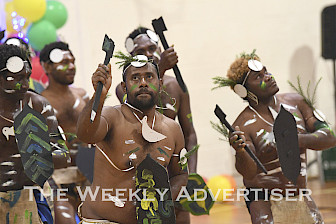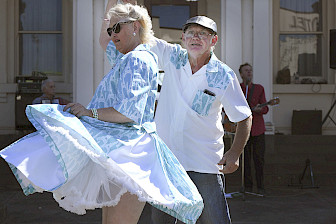But the Grampians are not just for international visitors to enjoy.
Last month I was lucky enough to walk the first stage of the fledgling Grampians Peaks Trail with four mates.
The trail is a planned 13-day, 12-night hike from Mount Zero at the northern end of the park to Dunkeld in the south.
Currently only a three-day loop centring on Halls Gap is open to the public, with the rest of the trail due to be completed by next year.
Three days were enough to get a taste of what a spectacular trail this will be.
The trail
The first day takes in some well-known sights, meandering past the Venus Baths rock pools before climbing through the unique Grand Canyon and Silent Street gorges on its way up to the Pinnacle lookout.
The second day takes in the views from the peak of Mount Rosea before descending to the southern end of Lake Bellfield, then looping back along the eastern edge of the lake and back into Halls Gap on day three.
At every turn the spectacular natural beauty of the park awed us.
Its beautiful rock formations, abundance of wildlife — including, unfortunately, snakes — and sweeping mountaintop vistas were utterly captivating.
When I asked my companions to describe their experience of the hike, words such as ‘stunning’, ‘majestic’, ‘untouched’ and ‘pristine’ were offered.
The park is a mecca for tourists — reports by Grampians Tourism and Business Victoria have shown it is the third most visited national park in Victoria after the Twelve Apostles and Point Nepean national parks. Its tourism industry generates nearly $300-million annually for the local economy.
The Grampians Peaks Trail will only add to its reputation as a tourist drawcard.
A 2014 Grampians Peaks Trail master plan estimated the trail would generate $6.39-million in annual revenue by 2025, with nearly 35,000 overnight and day walkers using it.
Parks Victoria hopes the trail might one day contend with Tasmania’s famous Overland Track as one of Australia’s best multi-day walking experiences.
Cultural heritage
Just as important as Grampians National Park’s economic significance is it historical and cultural significance.
The area, also known as Gariwerd, is central to the dreaming stories of the traditional owners of the land — the Djab Wurrung and Jardwadjali people.
In their tradition the ancestor spirit Bunjil shaped Gariwerd and took shelter in its sandstone cliffs before ascending into the sky and becoming a star.
The range houses some of the most important Aboriginal rock art sites in Australia and archaeological sites dated to more than 20,000 years old.
About 90 percent of the known rock art sites in Victoria are located in the park.
Given the Grampians’ vital historical, cultural and economic importance to the Wimmera, it was dismaying to report last month that several rock climbing sites in the park had been closed indefinitely by Parks Victoria.
Among the concerns listed by Parks Victoria chief operating officer Simon Talbot were climbers damaging plant life, forming illegal campfire rings, and leaving rubbish behind — including used toilet paper.
Some climbers have also placed bolts into rock walls within metres of sacred and historically significant Aboriginal rock art.
Our responsibility
While most rock climbers are respectful of the environment, the climbing bans should come as a wake-up call to them and all who use the park.
Something so vital to our region’s collective historical and economic identity should be cherished and protected above all else.
Outdoor activities in an unspoiled natural environment can be one of life’s great joys, but care should be taken to ensure they remain unspoiled so future generations can enjoy them too.
Planners mapped out the route of the Grampians Peaks Trail with input from traditional owners and conservation scientists.
Perhaps this model of collaboration to ensure conservation is a way forward for rock climbing groups.
Tighter links between Parks Victoria, local Indigenous groups and park users cannot be a bad thing.
Ultimately they could help ensure that when future generations come to see the Grampians, just like my friends, words such as ‘untouched’ and ‘pristine’ are the first to come to their minds as well.
